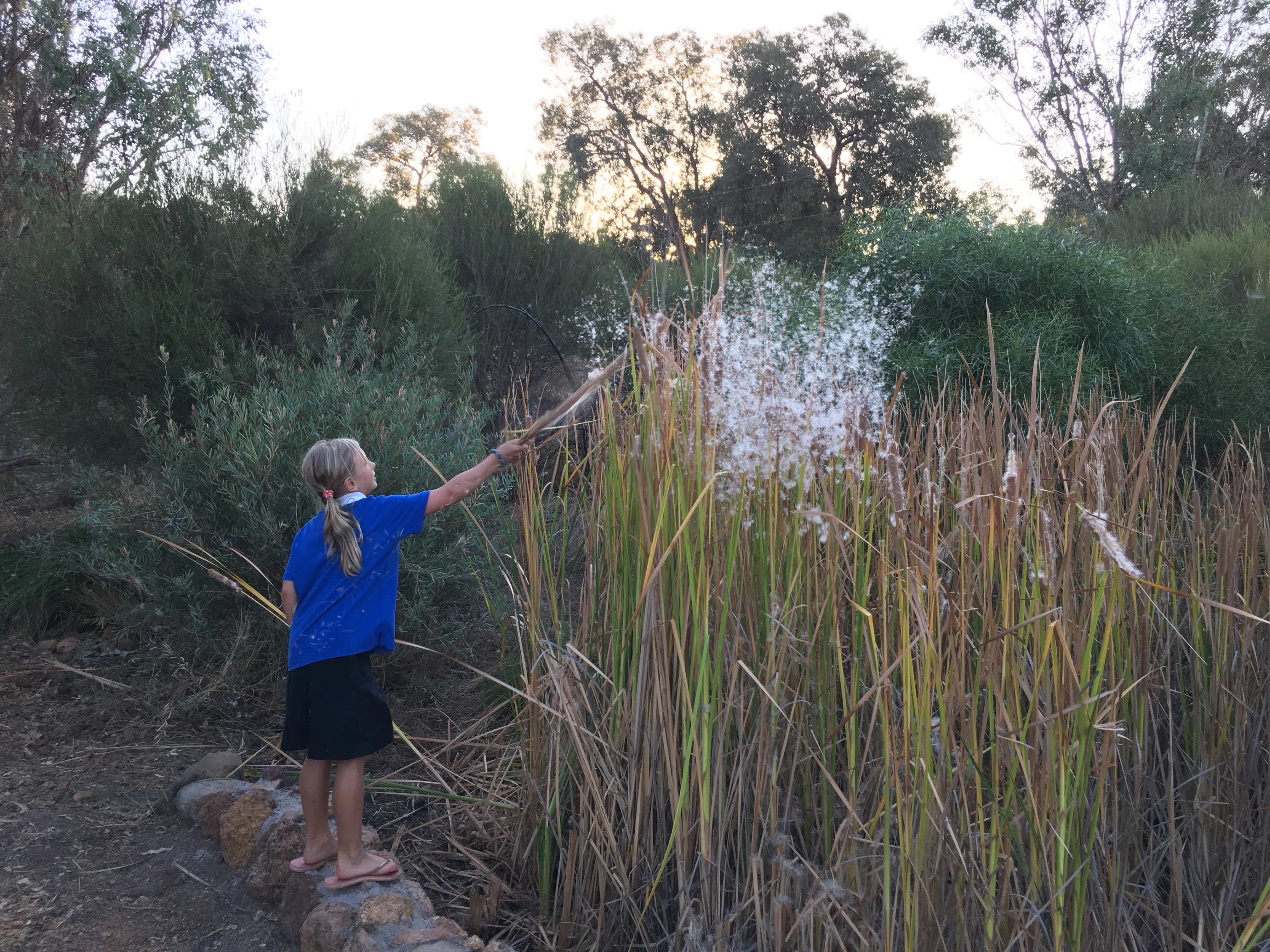Typha domingensis (yangit) or Bulrush is a reed that is native to Western Australia and occurs naturally in fresh to brackish waterways but can aggressively colonise dams and disturbed waterways.
It has a weedy relative called Typha orientalis (cambungi) which is native to eastern Australia and the two species are very difficult to tell apart. The introduced Typha orientalis generally has a wider leaf blade of up to 14 mm while Typha domingensis does not exceed 8 mm in width. Both are present in the wheatbelt.
Due to prolific seed production and thick rhizomes, Typha species can be very hard to control. If you’ve noticed a new colony of Typha on your property, it probably got there as a seed on the wind or hitched a ride on a waterbird. Neither species are declared weeds so it’s up to you how you feel about it. On one hand Typha are effective water filters and provide habitat for a range of water-loving animals; on the other hand they can “choke” up a wetland and contribute to siltation and flooding. See control methods outlined here. There is also a prohibited species called Typha latifolia that doesn’t currently occur in WA.



